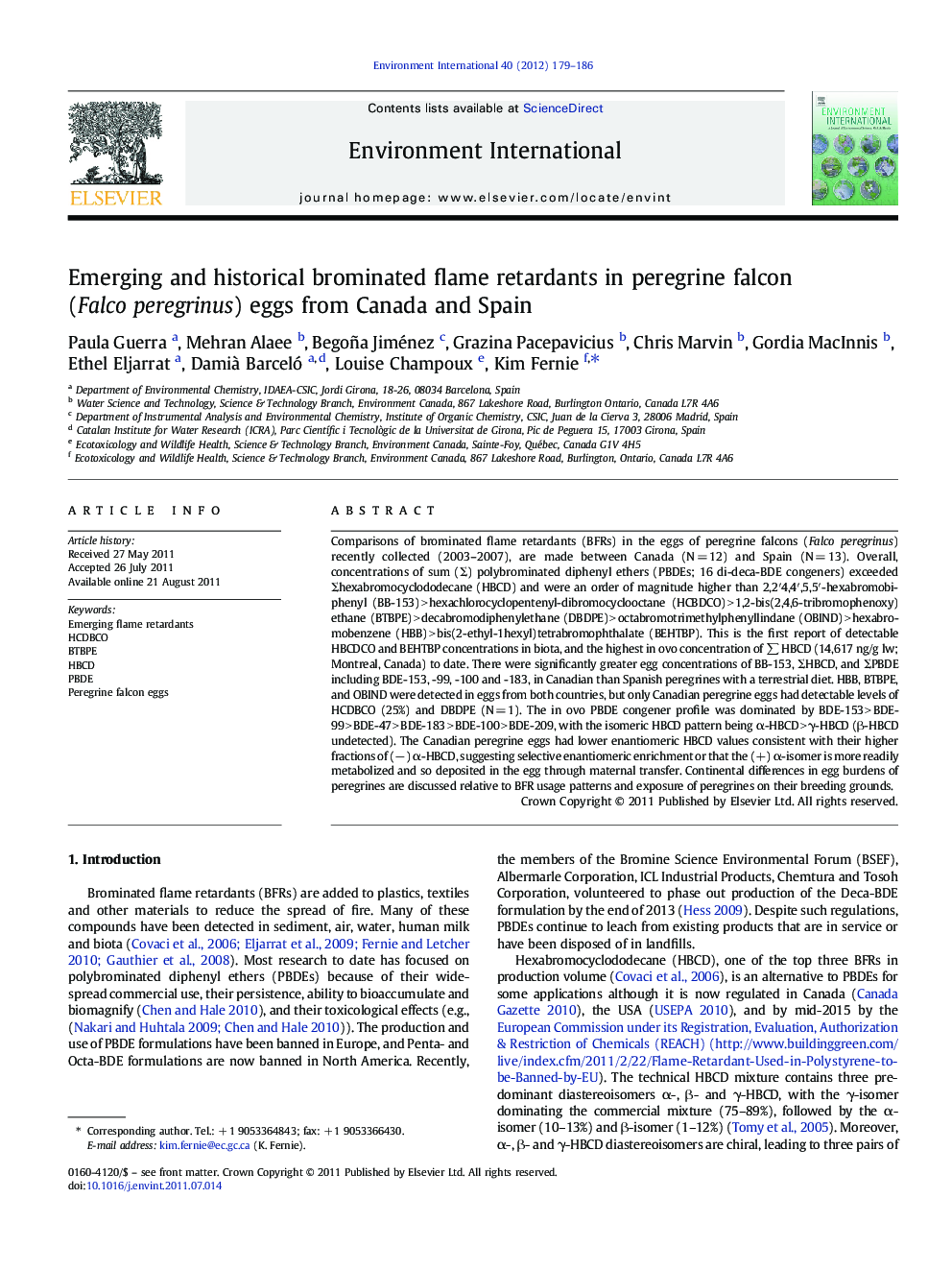| Article ID | Journal | Published Year | Pages | File Type |
|---|---|---|---|---|
| 4423115 | Environment International | 2012 | 8 Pages |
Comparisons of brominated flame retardants (BFRs) in the eggs of peregrine falcons (Falco peregrinus) recently collected (2003–2007), are made between Canada (N = 12) and Spain (N = 13). Overall, concentrations of sum (Σ) polybrominated diphenyl ethers (PBDEs; 16 di-deca-BDE congeners) exceeded Σhexabromocyclododecane (HBCD) and were an order of magnitude higher than 2,2′4,4′,5,5′-hexabromobiphenyl (BB-153) > hexachlorocyclopentenyl-dibromocyclooctane (HCBDCO) > 1,2-bis(2,4,6-tribromophenoxy)ethane (BTBPE) > decabromodiphenylethane (DBDPE) > octabromotrimethylphenyllindane (OBIND) > hexabromobenzene (HBB) > bis(2-ethyl-1hexyl)tetrabromophthalate (BEHTBP). This is the first report of detectable HBCDCO and BEHTBP concentrations in biota, and the highest in ovo concentration of ∑ HBCD (14,617 ng/g lw; Montreal, Canada) to date. There were significantly greater egg concentrations of BB-153, ΣHBCD, and ΣPBDE including BDE-153, -99, -100 and -183, in Canadian than Spanish peregrines with a terrestrial diet. HBB, BTBPE, and OBIND were detected in eggs from both countries, but only Canadian peregrine eggs had detectable levels of HCDBCO (25%) and DBDPE (N = 1). The in ovo PBDE congener profile was dominated by BDE-153 > BDE-99 > BDE-47 > BDE-183 > BDE-100 > BDE-209, with the isomeric HBCD pattern being α-HBCD > γ-HBCD (β-HBCD undetected). The Canadian peregrine eggs had lower enantiomeric HBCD values consistent with their higher fractions of (−) α-HBCD, suggesting selective enantiomeric enrichment or that the (+) α-isomer is more readily metabolized and so deposited in the egg through maternal transfer. Continental differences in egg burdens of peregrines are discussed relative to BFR usage patterns and exposure of peregrines on their breeding grounds.
► Emerging flame retardants were measured in Canadian and Spanish peregrine eggs. ► Overall, ΣPBDE levels > ΣHBCD > BB-153 > HCBDCO > BTBPE > DBDPE > OBIND > HBB > BEHTBP. ► This is the first report of HCDBCO, BEHTBP, OBIND in the environment, biota, &/or peregrines. ► A Canadian egg had the highest ΣHBCD level for peregrines, and α-HBCD dominated all eggs. ► Historical BFR levels in Canadian and Spanish peregrine eggs reflect BFR usage patterns in North America and Europe.
